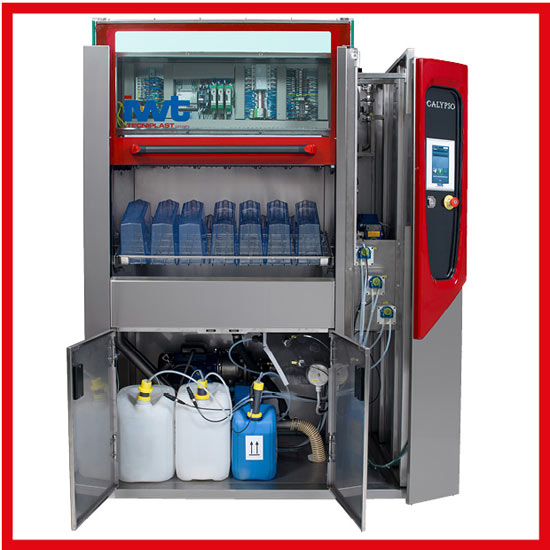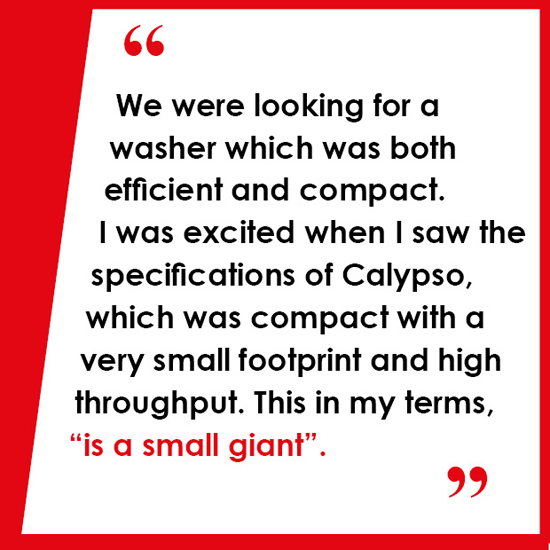
The current version of the Tecniplast website doesn't match your region. Please visit your local website to find information and offerings specific to your country.

The current version of the Tecniplast website doesn't match your region. Please visit your local website to find information and offerings specific to your country.

 Scientific manager in the Faculty of Science at National University of Singapore (NUS), Dr. N. Subha shares with us the latest evolutions in the Aquatic department.
Scientific manager in the Faculty of Science at National University of Singapore (NUS), Dr. N. Subha shares with us the latest evolutions in the Aquatic department.
NUS is the first autonomous research university in Singapore and is also a comprehensive research university, offering a varied range of disciplines including the Sciences, Medicine and Dentistry, Design and Environment, Law, Arts and Social Sciences, Engineering, Business, Computing and Music at both an undergraduate and postgraduate level. Founded in 1905 as the Straits Settlements and Federated Malay States Government Medical School, NUS is the oldest higher education institution in Singapore. In a vital scientific arena, a sophisticated Lab Animal Facility plays an important role in the Scientific competition. N.Subha manages a fish facility of about 130 m2 which houses 16 recirculating rack and 5 static racks. The facility houses both Zebra and Medaka fishes in Tecniplast tanks.
 What kind of research is being conducting in your facility?
What kind of research is being conducting in your facility?
1) One major research group of this facility focuses on using the previously established (by the group) zebrafish liver cancer models to study the a) molecular mechanisms of reversibility of tumour cells after oncogene inactivation; b) chemical intervention for conserved embryogenesis and tumour metastasis.
2) Another group mainly focuses on the generation and maintenance of transgenic and mutant Medaka and Zebrafish lines to study the function of differentiation genes in the formation, degeneration and regeneration of neurons and bones cells in fish embryos, larvae and adults.
You have evaluated a washer recently, namely Calypso. What are your needs and the benefit you were looking for?
In a space constrained country like Singapore, we did not cater for a washer in the facility because of the size of the then available models of washers which were not able to fit in a limited width of 1360mm. It was decided then to hire manpower to do manual washing of all tanks in the facility. We were looking for a washer which was both efficient and compact. I was excited when I saw the specifications of Calypso, which was compact with a very small footprint and high throughput.
 This in my terms, "is a small giant". I decided to purchase this model because I could put it in a tight space without any alteration to the existing facility, its low RO water consumption and its ability to wash up to 100 tanks per day. The model did not require hot water supply and has two water inlets, one for city water and another for RO water respectively. This feature is ideal as the total RO water is only used for the final rinse.
This in my terms, "is a small giant". I decided to purchase this model because I could put it in a tight space without any alteration to the existing facility, its low RO water consumption and its ability to wash up to 100 tanks per day. The model did not require hot water supply and has two water inlets, one for city water and another for RO water respectively. This feature is ideal as the total RO water is only used for the final rinse.
I was also impressed by the capibility of effective removal of biofilm of this machine which eliminates the need for manual rinse before loading the tanks into the machine.
The compact design of the Calypso with the detergent storage cabinet below helps in management of small spaces and reduces clutter. Finally, the user-friendly interface with remote monitoring and diagnostic possiblities is impressive.
Would you recommend Calypso to your colleagues and can you list the 3 most important sustainable competitive advantages?
Yes, I would definitely recommend it.
Where do you see the research in 10 years from now?
In ten years from now, research funding agencies will be supporting more specific specialised small to medium facilities which preferably would be highly automated and economically sustainable.
Which drivers in your opinion will become important in the selection of a product?
Cost effective and high throughput sustainable solutions will drive the selection of research products which will free up manpower that can be utilised to provide the optimal care and comfort of research animals in facilities.
MARCO PAGANI – MARKETING & COMMUNICATION MANAGER - IWT